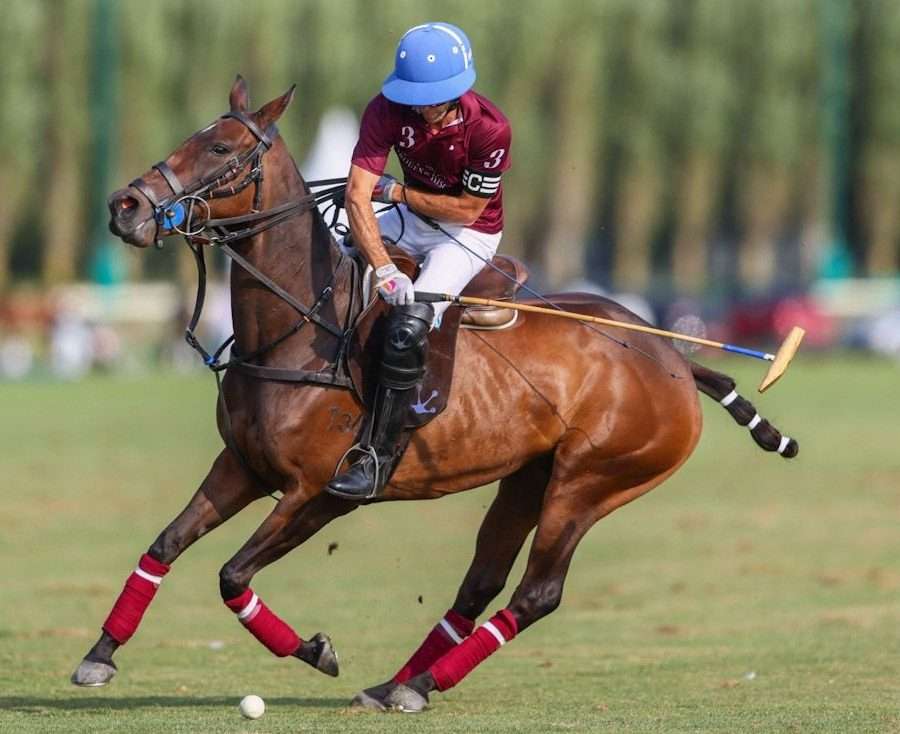By Prof. Eduardo Amaya
- USING THE REINS
Both athletes, the rider and the horse, communicate with each other. The rider must have sensitive hands, good use of body weight, and correct leg positioning. The horse must be sensitive and well-trained.
The most direct communication with the horse is through the reins, which should be used moderately and honestly. Considering that we handle the horse for most of the game, we should do so, whenever possible, with both hands to
maintain maximum control until we are ready to hit the ball.
Using both hands to handle the horse gives us balance and security, allowing us to perceive the horse’s energy and where it places its hind legs, among other benefits.
- BALANCE
Balance with the horse means safety and efficiency while riding. A balanced horse conserves its energy and is less likely to get injured. This balance should be assisted by the rider’s good horsemanship. The horse maintains its
balance when it turns following its nose; a balanced horse seeks to distribute its weight evenly among its four legs, which act as elements of support and propulsion.
To maintain the horse’s correct balance, the rider must keep their body axis (spine) in line with the horse’s center of gravity and only shift from ischium to ischium with slight support on the stirrup on the side of the turn. Good horse balance is a source of energy. During the game, each change of direction requires a lot of energy. For quick movements, we must help the horse by following its center of gravity.
- CHANGING SIDES
Polo is a fast-paced game where a half-ton horse is constantly changing direction.
The first thing a player must know is when the horse changes sides, shifting its weight from one side to the other. We need to work on this to receive that communication.
We should know that the horse must change its hind legs first (back to front order) and then complete the change with the front legs. It is easy for the horse to change the front legs first, but this is incorrect and will cause
it to be unbalanced at times.
The first thing the rider should do when changing sides is to collect the horse and let it know that the next signal will come through the external leg pressing and the internal leg supporting the turn.
At the same time, we change the direction of the head and neck with the reins and gently place our weight on the stirrup on the side of the turn.
- STOPPING AND STARTING
Stopping in polo is important, although the horse rarely stops completely. Stopping consumes a lot of energy.
When we develop speed, we notify the horse about the stop with small touches, gently giving and taking with the reins until fully holding them. Holding and turning is common in games, and it’s a more complex movement.
The horse uses its hind legs to make the half-stop, then pivots on one of them, the inside one, pushing with the opposite hind leg and the external front leg, and then moves off in another direction.
The rider’s communication with the horse comes from the bottom up; the opposite happens with the horse, which receives communication from the top down. I use the term harmony, which is nothing more than the communication between both athletes.

